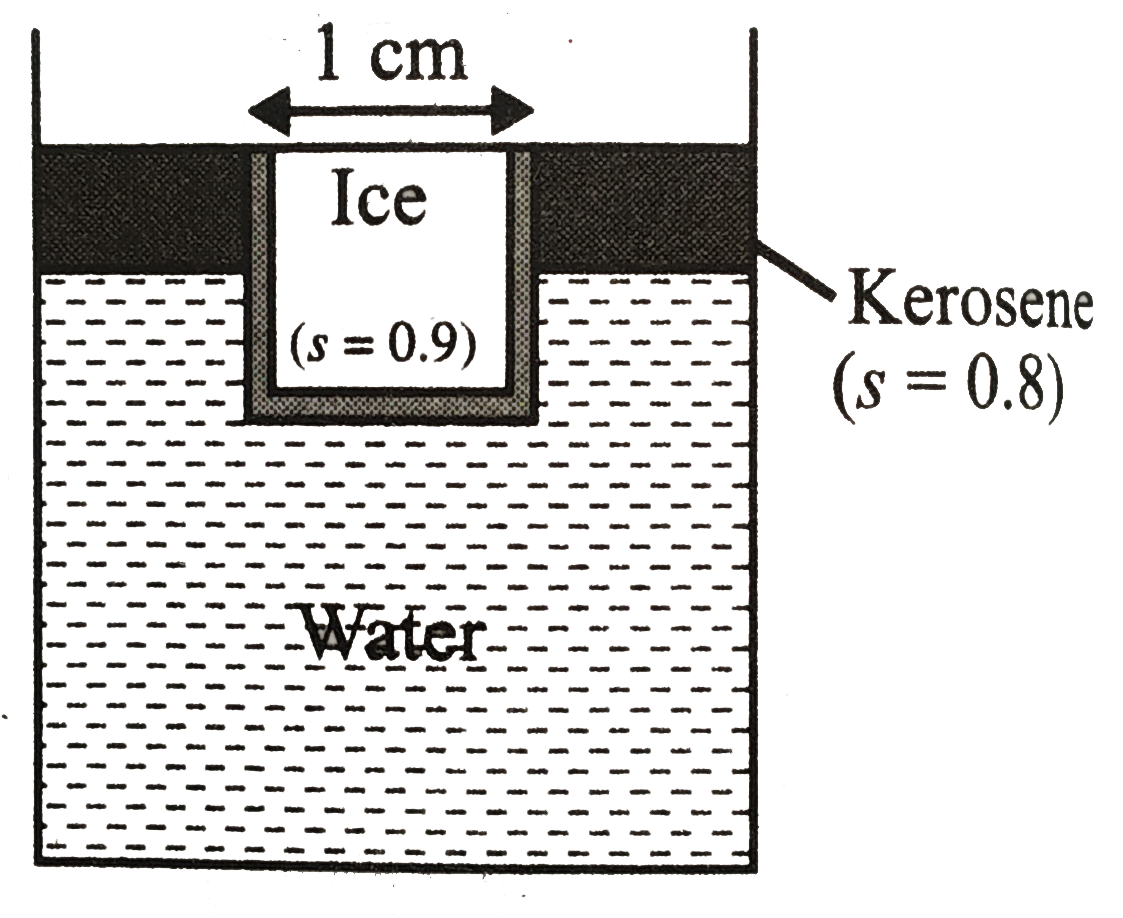The density of ice xcm−3 and that of water is ygcm−3. What is the change in volume when mg of ice melts?
m(y−x)
y−xm
my(y−x)
my−mx
The correct Answer is:D
To find the change in volume when m grams of ice melts, we can follow these steps:
Step 1: Understand the problem
When m grams of ice melts, it transforms into m grams of water. We need to calculate the change in volume that occurs during this transformation.
Step 2: Calculate the volume of ice
The volume of ice can be calculated using the formula:
\(
\text{Volume of ice} = \frac{\text{mass of ice}}{\text{density of ice}} = \frac{m}{x}
\)
where m is the mass of the ice and x is the density of ice in grams per cubic centimeter.
Step 3: Calculate the volume of water
Similarly, the volume of water formed from the melted ice can be calculated as:
\(
\text{Volume of water} = \frac{\text{mass of water}}{\text{density of water}} = \frac{m}{y}
\)
where y is the density of water in grams per cubic centimeter.
Step 4: Calculate the change in volume
The change in volume when the ice melts is given by the difference between the volume of water and the volume of ice:
\(
\text{Change in volume} = \text{Volume of water} - \text{Volume of ice}
\)
Substituting the volumes calculated in Steps 2 and 3, we have:
\(
\text{Change in volume} = \frac{m}{y} - \frac{m}{x}
\)
Step 5: Factor out m
We can factor out m from the equation:
\(
\text{Change in volume} = m \left( \frac{1}{y} - \frac{1}{x} \right)
\)
Final Result
Thus, the change in volume when m grams of ice melts is:
\(
\text{Change in volume} = m \left( \frac{1}{y} - \frac{1}{x} \right)
\)
---
When m grams of ice melts, it transforms into m grams of water. We need to calculate the change in volume that occurs during this transformation.
The volume of ice can be calculated using the formula:
\(
\text{Volume of ice} = \frac{\text{mass of ice}}{\text{density of ice}} = \frac{m}{x}
\)
where m is the mass of the ice and x is the density of ice in grams per cubic centimeter.
Similarly, the volume of water formed from the melted ice can be calculated as:
\(
\text{Volume of water} = \frac{\text{mass of water}}{\text{density of water}} = \frac{m}{y}
\)
where y is the density of water in grams per cubic centimeter.
The change in volume when the ice melts is given by the difference between the volume of water and the volume of ice:
\(
\text{Change in volume} = \text{Volume of water} - \text{Volume of ice}
\)
Substituting the volumes calculated in Steps 2 and 3, we have:
\(
\text{Change in volume} = \frac{m}{y} - \frac{m}{x}
\)
We can factor out m from the equation:
\(
\text{Change in volume} = m \left( \frac{1}{y} - \frac{1}{x} \right)
\)
Thus, the change in volume when m grams of ice melts is:
\(
\text{Change in volume} = m \left( \frac{1}{y} - \frac{1}{x} \right)
\)
Topper's Solved these Questions
- BOOK - DC PANDEY ENGLISHCHAPTER - FLUID MECHANICSEXERCISE - B) Medical entrance special format question19videos
FLUID MECHANICS
- BOOK - DC PANDEY ENGLISHCHAPTER - FLUID MECHANICSEXERCISE - Match the columns6videos
FLUID MECHANICS
- BOOK - DC PANDEY ENGLISHCHAPTER - FLUID MECHANICSEXERCISE - Check point 13.410videos
FLUID MECHANICS
- BOOK - DC PANDEY ENGLISHCHAPTER - EXPERIMENTSEXERCISE - Subjective15videos
EXPERIMENTS
- BOOK - DC PANDEY ENGLISHCHAPTER - GENERAL PHYSICSEXERCISE - INTEGER_TYPE2videos
GENERAL PHYSICS
Similar Questions
Knowledge Check
- Question 1 - Select One
At 100°C and 1 atm, if the density of liquid water is 1.0gcm−3 and that of water vapour is 0.0006 gcm-3 , then the volume occupied by water molecules in 1 litre of steam at that temperature is:
A6cm3B60cm3C0.6cm3D0.06cm3
The density of ice is 0.92g cm−3 and that of sea water is 1.025g cm−3. Find the total volume of an iceberg which floats with its volume 800cm−3 above water.
View SolutionAt 100oC and 1 atm, if the density of the liquid water is 1.0gcm−3 and that of water vapour is 0.0006gcm−3, then the volume occupied by water molecules in 1 L of steam at this temperature is :
View SolutionA plece of ice floats in a beaker containing water with a certain fraction inside water. If the density of ice is D and that of water is ρ find the value of n. What will happen to the level of water when the ice completely melts ?
View SolutionWrite the sequence of change in state of matter when
ice meltsView SolutionAt 1 atmospheric pressure, 1000 g of water having a volume of 1000cm3 becomes 1.097cm3 of ice on freezing. The heat of fusion of water at 1 atmosphere is 80.0cal/g. What is the change in internal energy during the process?
View SolutionAn ice cube of side 1cm is floating at the interface of kerosene and water in a beaker of base area 10cm2. The level of kerosene is just covering the top surface of the ice cube.
a. Find the depth of submergence in the kerosene and that in the water.
b. Find the change in the total level of the liquid when the whole ice melts into water.
 View Solution
View SolutionAn iceberg of density 900kg/m3 is floating in water of density 1000kg/m3. The percentage of volume of ice cube outside the water is
View Solution

